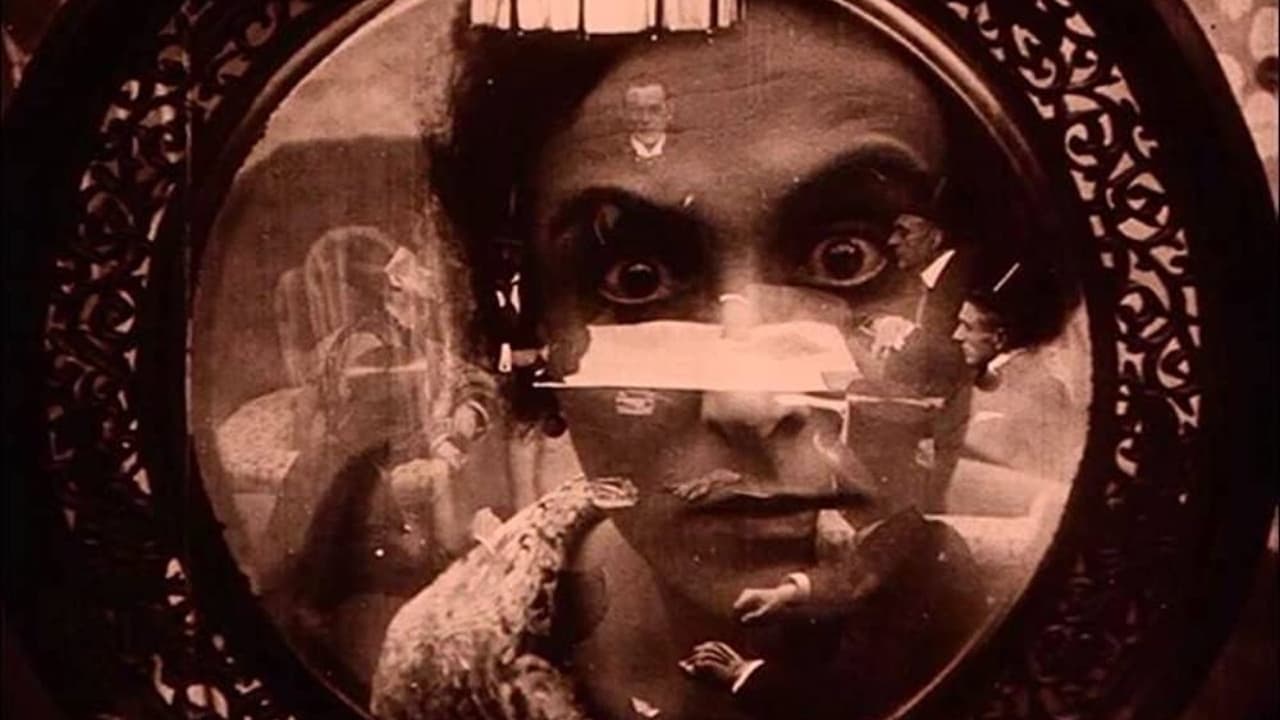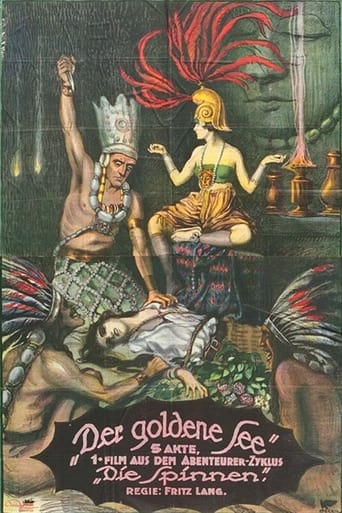

Very interesting film. Was caught on the premise when seeing the trailer but unsure as to what the outcome would be for the showing. As it turns out, it was a very good film.
... View MoreI think this is a new genre that they're all sort of working their way through it and haven't got all the kinks worked out yet but it's a genre that works for me.
... View MoreIt is an exhilarating, distressing, funny and profound film, with one of the more memorable film scores in years,
... View MoreThis movie feels like it was made purely to piss off people who want good shows
... View MoreIn 1919 Fritz Lang passed up the opportunity to direct the now better-known Cabinet of Doctor Caligari, arguably the first German Expressionist Film, in order to make this apparently lightweight and simplistic adventure yarn. This is perhaps a surprise for those who see Lang as obsessed with deep and dark psychological studies but, in truth, Lang had a passion for easygoing comic book fare. Here Lang gets to indulge an action-adventure streak that carries through his work right up to his Indian diptych of 1959.It has to be said, the story of The Spiders' is paper-thin. Lang would construct far stronger plot lines in his collaborations with Thea von Harbou, but he penned this one on his own. His approach to storytelling is almost childlike, full of bizarre turns and constantly changing location and pace, as if to cram in as many ideas as possible. Yes, it's altogether flimsy and lacking in any depth, but it barely matters when the plot functions largely as an excuse for leading onto the next action set piece. It actually also occurred to me that Kay Hoog abandoning his yacht race to embark on a search for treasure might be a tongue-in-cheek reference to Lang's rejection of the Caligari project. Unlikely, but it would be very apt.As to Fritz Lang's abilities as a filmmaker, well, he had a fair way to go still in terms of grasping the form. In terms of staging action he follows the parallel editing techniques of DW Griffith. That's not a bad thing in itself, it's just that sometimes there's not enough correlation between the individual shots, and it gets a bit confusing as to where everyone is in relation to each other. Take for example the opening scene where an Inca stalks an explorer. We can infer that they are wandering around on the same cliff edge, but we don't really sense the danger the hunted man is in. Lang could have solved this by throwing in a point-of-view shot of the Inca looking down at the explorer or, better still, have the Inca appear in the frame behind and above him in a long shot. It's as if Lang knows what the script demands, but can't visualise the finished product and isn't experienced enough to know what will and won't work.What is distinctive about The Spiders however, and what makes it recognisable as one of Lang's, is its use of space. Lang trained as an architect at one point in his youth, and this is reflected in his shot composition. The sets here were designed by Hermann Warm, and they are very impressive so Lang was almost obliged to show them off, but it's the way he shoots them and the actors within them that is unique to him. While they are not as stark and stylised as the very typically Langian sets of the Dr Mabuse films or Metropolis, they are used in the same way. Lang often shows characters dwarfed in massive rooms, even when normal film convention would demand a mid-shot. He also likes to form geometric patterns in his shots, often with converging or criss-crossing diagonals. In fact, so good is Lang at showing off the architecture in The Spiders, it's actually to the detriment of the actors. He hasn't yet learnt how to focus our attention on the most important points of action.For all its flaws, The Spiders can be enjoyed as the pure and simple adventure flick that it is at heart leaping from espionage to western to human sacrifice at the drop of a hat. It's very much in the tradition of Indiana Jones or the Tintin books (in fact it may well have been a direct influence on Prisoners of the Sun). The only trouble is there are far betters books and films in that tradition, so perhaps this is really one for Fritz Lang completists only.
... View MoreIn San Francisco, the sportsman Kay Hoog (Carl de Vogt) tells to the members of a club that he has found a message in a bottle with a map from a Harvard's professor telling about a treasure of an Inca lost civilization still alive. He decides to go to Peru to seek the gold. However, members of the secret criminal organization "The Spiders" leaded by Lio Sha (Ressel Orla) break in Kay's mansion during the night and steal the map. Kay Hoog travels to Peru, where he retrieves his map and a document about the Diamond Ship from The Spiders. Later he saves the Priestess of the Sun Naela (Lil Dagover) and brings her to San Francisco. However, The Spiders kill Naela and Kay Hoog promises revenge for the death of his love."Die Spinnen,1. Teil - Der Goldene See" is so far the weakest movie of the Master Fritz Lang that I have seen. The silly adventure is messy and pointless, with the (weak) hero going to the Inca civilization without supplies and returning engaged of their priestess that falls in love with him without any explanation. The Incas are destroyed by the criminals, and in the end I really did not like the story of this film. Anyway, Kay Hoog seems to be the source of inspiration of Indiana Jones. My vote is six.Title (Brazil): "As Aranhas Parte 1 O Lago Dourado" ("The Spiders Part 1 The Golden Lake")
... View MoreThis first episode of Fritz Lang's "The Spiders" is an entertaining adventure story, and it is particularly notable for its imaginative settings and visuals, and for the way that each sequence leads smoothly into the next. The story is far-fetched, of course, but Lang tells it quite well, and it makes for enjoyable viewing.The basic setup of the sinister organization of "Spiders" involves some of the themes that Lang used in more detailed form in his Dr. Mabuse movies. Here, the story is strictly for entertainment purposes, and as such it works well. Ressel Orla is suitably elegant as the leader of the "Spiders", and she usually makes the best of her opportunities.The opening message-in-a-bottle scene sets the tone, establishing tension and mystery right away. From there, Lang builds up the story nicely, as the characters learn about the hidden treasure and compete with each other and with other adversaries to find it. His style here is similar to that in some of the best of contemporary action movies, such as the Indiana Jones films. Most of the scenes work well in themselves, and once it gets going, each scene also moves the story ahead immediately to the next scene, without letting you pause for breath.Lil Dagover also adds a lot in her role as the priestess. Carl de Vogt is adequate as the hero Hoog, but he does not have a lot of presence or charisma, and most of the energy level in the characters comes from the female leads.This episode got "The Spiders" off to a good start, and it is the best of the two segments that Lang actually filmed. It does not have the deep themes found in Lang's best movies, but as entertainment it works quite well.
... View MoreA surprisingly weak film. The pacing is haphazard. The special effects are ineffectual. It's hard to believe that these pitiful sets were from the set designer for The Cabinet of Dr Caligari. The actors use guns the way that inexperienced toddlers might. And the Americans, Peruvians, and Inca all look very, very German. This film is only for the compleatist, desiring to view all of the films of Fritz Lang or of this genre. Don't come here for entertainment.
... View More